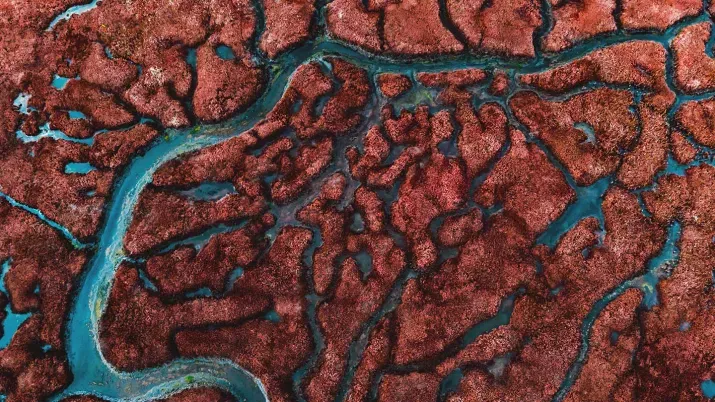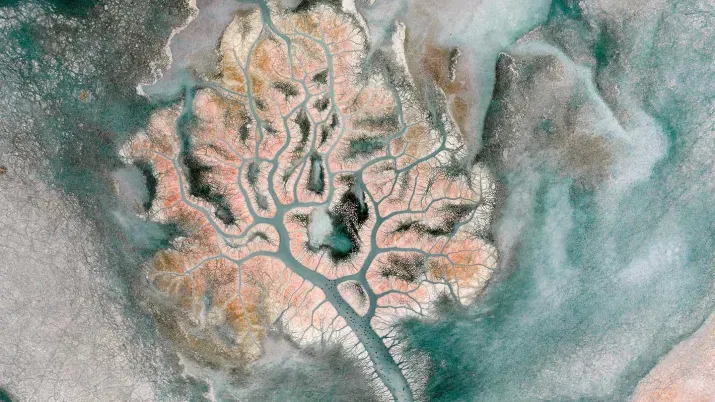How to thrive without water? The challenge of water scarcity
Asset management
Poet W. H. Auden once wrote: “Thousands have lived without love, not one without water.”
World Water Week 2023 draws attention to the need for innovation at a time of unprecedented challenges. It highlights the importance of water as a building block of our world and, as Vontobel’s impact investing strategies do, advocates for access to clean and safe water.
Water is life
Despite water being abundant on our planet, many parts of the world are experiencing water stress. While 70%1 of the Earth’s surface is water, most of this is salt water. Less than 1% of the planet’s freshwater supply is suitable for agriculture and industry, with pollution having rendered an even smaller amount suitable for human consumption. To complicate matters further, only approximately one-fifth of the water suitable for human consumption is accessible, amounting to less than 3% of the Earth’s total water resource.
Water plays a driving role in our economies. Its consumption is indispensable in today’s world—we use and require water in every aspect of our daily lives. Of the world’s freshwater, about 70% is used for agriculture, roughly 18% for industrial use, and 12% for domestic (household) consumption. Think of the water required to produce concrete or consumed in semiconductor facilities— without this resource, agriculture, households, offices, and industry cannot function. And we also consume it in huge volumes: semiconductor gigafactories consume water at a similar rate to a city with a population of 150,000 or more.
Economic and geopolitical implications
Given the limited supply of freshwater and our current consumption rates, water scarcity is a real issue. A recent study2 highlights that approximately 3.8 billion people currently experience water scarcity for at least one month per year. The 2018 edition of the UN’s World Water Development Report estimates that nearly six billion people will suffer from such a clean water scarcity by 2050.
Without the help of natural gravity, water is a resource that is difficult to transport over long distances as we consume so much water on a daily basis.
“While bottled drinking water is traded and shipped around the world, agricultural and industrial sectors require significant volumes of water that can only be met by pipelines or water canals used to redirect greater amounts of water,” said Reto Cueni, Vontobel’s Chief Economist. “These difficulties in trade, together with the geographical importance of lakes, rivers, and underlying water basins, mean that water is a resource that is a geopolitically sensitive subject. Water can trigger fierce conflicts among neighbouring countries.”
Figure 1 displays the transboundary river basins and the current conflict zones due to water disputes. Another consideration is the comparison of a country’s share of the world’s population with its share of global water resources (see figure 2). This highlights that, apart from the global issue of water scarcity, the distribution of water—regions with an abundant supply versus those that are drier—is a key geopolitical topic.


This is exacerbated by climate change, which appears likely to impact temporal discrepancies between periods of rainfall and dry periods. Spatial differences in rainfall and droughts are also likely to be impacted3. The most vulnerable regions are West and East Africa, the northern Middle East, and the areas bordering Central, East, and South Asia, according to a United Nations (2022) report4. This last region entails potential future water basin conflicts involving globally important powers such as India, Pakistan, China, and Russia.
Innovating for change
Run every year since 1991 by the Stockholm International Water Institute, World Water Week believes that tackling the greatest challenges of our time often starts with water. The theme for 2023, Seeds of Change: Innovative Solutions for a Water-Wise World, invites us to rethink how we manage water. It also demonstrates how, in times of great challenge, collaboration among diverse thinkers can lead to much needed innovation. Which ideas, innovations, and governance systems will we need in a more unstable and water-scarce world?
Bridging the gaps toward such change requires innovation, and this can come with a massive price tag. As capital allocators, investment firms have a clear role to play. We also believe that investors are moving increasingly towards sustainability, displaying growing awareness of and a focus on sustainability, including for investment decisions. This is why Vontobel’s impact investing strategy is to address the world’s most pressing challenges by investing in companies with innovative and scalable products and services. This approach aims to offer clients what we call the “double dividend”: the opportunity to generate financial returns while at the same time making a positive and measurable impact on our planet and society.
Looking at water specifically, our impact investing approach aims to invest in companies that address the world’s need for clean water. While three billion people worldwide rely on water sources of unknown quality5, this challenge is compounded by rising demand for water, increasing water pollution, and inadequate access to safe and affordable drinking water. Through impact investing, we invest in companies that: provide drinking water and manage waste water; upgrade old water infrastructure using new technologies and monitoring; address sanitation and water treatment infrastructure for EM countries; create products to improve water efficiency; and enable desalination.

1. United States Geological Service (2019) The distribution of water on, in and above Earth. Available at
https://www.usgs.gov/media/images/distribution-water-and-above-earth
2. Boretti, A., & Rosa, L. (2019). Reassessing the projections of the World Water Development Report. npj Clean Water, 2, 15. Available at
https://www.nature.com/articles/s41545-019-0039-9
3. Smil, V. (2021). Grand Transitions: How the Modern World Was Made. New York: Oxford University Press. p. 185. Greve, P., Kahil, T., Mochizuki, J., et al. (2018). Global assessment of water challenges under uncertainty in water scarcity projections. International Institute for Applied Systems Analysis, Laxenburg: Austria.
4. Food and Agricultural Organization of the United Nations. (2022). The state of the world’s land and water resources for food and agriculture 2021: Systems at breaking point. Rome, Italy. Available at
https://www.fao.org/documents/card/en/c/cb9910en
5. Boretti, A., & Rosa, L. (2019). Reassessing the projections of the World Water Development Report. NPJ Clean Water, 2, 15. Available at
https://www.nature.com/articles/s41545-019-0039-9
This document is for information purposes only and nothing contained in this document should constitute a solicitation, or offer, or recommendation, to buy or sell any investment instruments, to effect any transactions, or to conclude any legal act of any kind whatsoever. Decisions based on information contained in this document are the sole responsibility of the reader. You must not rely on any information contained in this document in making an investment or other decision. This document has not been based on a consideration of any individual investor circumstances. Any projections, forward-looking statements or estimates contained in this document are speculative and due to various risks and uncertainties, there can be no assurance that the estimates or assumptions made will prove accurate, and actual events or results may differ materially from those reflected or contemplated in this document. Opinions expressed in this document are subject to change based on market, economic and other conditions. Information in this document should not be construed as recommendations, but as an illustration of broader economic themes. Past performance is not a reliable indicator of current or future performance. The return of an investment may go down as well as up, e.g. due to changes in rates of exchange between currencies. The value of the money invested in a fund can increase or decrease and there is no guarantee that all or part of your invested capital can be redeemed.




